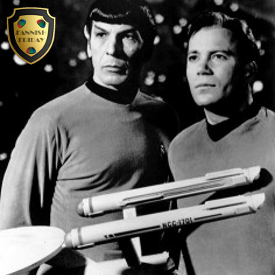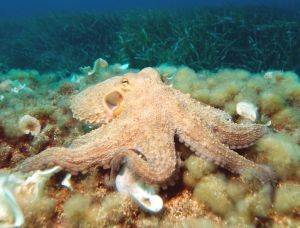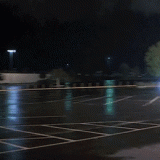Well, of course they didn’t have television in the 1800s, but there were no shortage of the credulous willing to believe the latest hoax. In that sense the human race hasn’t changed one whit.
What do 19th century hoaxes have to do with modern television?
Everything.
This is an age when a man on television points at the outline of a Hindu temple, a sort of rounded pointy thing, and next at an outline of a space shuttle, a sort of rounded pointy thing, and declares “Does this not prove the people of ancient India possessed space shuttles?”
Fair question. The answer is no, it doesn’t.
However, untold gazillions of people in the audience are thinking “Well, I’ll be darned. I never thought of comparing the two. They’re both sort of rounded pointy things, so they must be identical! I wonder if the ancient Hindu space shuttles were better than ours? And were they government funded? Food for thought.”
People today laugh at the ‘fools’ in the 19th century for being ‘taken’ by an obvious hoax?
We are no better. And modern hoaxes are no better. In fact, I think the hoaxers of yore put more thought into their efforts. Today’s shoddy puffery is very much inferior by comparison.
Case in point, a serialized article titled “Great Astronomical Discoveries” allegedly made by Sir John Herschel, a famous astronomer, running daily in the New York Sun newspaper the last week of August 1835. It caused quite a sensation. Circulation of the paper shot up to 50,000, a very large number in 1835.
Its author was one Richard Adams Locke, who seems to have been something of a satiric genius with a wry sense of humor. He established a set of rules for proper hoaxing any modern hoaxer would do well to emulate.
(By the way, my source is the complete text of the article as published by Hugo Gernsback in Issue #6 of Amazing Stories in September of 1926. Kudos to Hugo for rescuing this legend from oblivion.)

RULE NUMBER ONE: establish how intellectually profound (and flattering to the reader) the hoax is going to be:
“It has been poetically said, that the stars of heaven are the hereditary regalia of man, as the intellectual sovereign of the animal creation.”
Said by whom? Just Locke I guess. What matters is that we are being told the stars of the heavens belong to us. We must be very deserving. We must be wonderful.
What scoundrel is telling the tale? We all know the world abounds in con artists and carpet baggers…
RULE NUMBER TWO: establish the unimpeachable (sounding) credentials of the narrator:
“For our early and almost exclusive information concerning these facts, we are indebted to the devoted friendship of Dr. Andrew Grant, the pupil of the elder, and for several years past the inseparable coadjutor of the younger Herschel. The amanuensis of the latter at the Cape of Good Hope, and the indefatigable superintendent of his telescope during the whole period of its construction and operation, Dr. Grant has been enabled to supply us with intelligence equal, in general interest at least, to that which Dr. Herschel himself has transmitted to the Royal society.”
I have no idea what this means, but a coadjutor who is also an amanuensis is way above my league. Can’t get more creditable than that!
But how can there be “great astronomical discoveries”? We all know (in 1835) telescopes are about as big as they can get. Aren’t further discoveries impossible?
RULE NUMBER THREE: explain clearly why the impossible is impossible:
“The law of optics, that an object becomes dim in proportion as it is magnified, seemed… to form an insuperable boundary to further discoveries in our solar system… for unless the sun could be prevailed upon to extend a more liberal allowance of light in these bodies, and they be induced to transfer it, for the generous gratification of our curiosity, what adequate substitute could be obtained?”
Exactly! Can’t get any clearer than that. The impossible IS impossible, unless…
RULE NUMBER FOUR: blindside the reader with scientific bafflegab that ‘solves’ the problem.
The answer came in discussion between Sir John Herschel and a certain Dr. Brewster:
“Sir John diffidently inquired whether it would not be possible to effect a transfusion of light through the focal object of vision. Sir David, somewhat startled at the originality of the idea, paused awhile, and then hesitatingly referred to the irrefrangibility of rays, and the angle of incidence. Sir John, grown more confident, adduced the example of the Newtonian Reflector, in which the irrefrangibility was corrected by the second speculum, and the angle of incidence was restored by a third.”
“And,” continued he, “why cannot the illuminated microscope, say the hydro-oxygen, be applied to render distinct, and if necessary, even to magnify the focal object?”
Why not indeed? But theory is one thing, the practical accomplishment quite another.
RULE NUMBER FIVE: pour on the (allegedly convincing) scientific technical details:
“The only apparent desideratum was a recipient for the focal image which should transfer it, without refranging it, to the surface on which it was to be viewed under the revivifying light of the microscopic reflectors… a medium of the purest plate glass (which is said that they obtained, by consent, be it observed, from the shop window of Mons. Desanges, the jeweler to his ex-majesty Charles X, in High Street) was the most perfect eligible they could discover.”
Suffice to say, Herschel raises the funds to pour an object-glass twenty-four feet in diameter, weighing 14,826 lbs, with an estimated magnification power of 42,000, to be combined with “the illuminating power of the hydro-oxygen microscope.”
RULE NUMBER SIX: raise the reader’s expectations beyond what you’ll actually deliver, so that what you DO tell them seems reasonable in comparison:
“So sanguinely indeed did he calculate upon the advantages of this splendid alliance, that he expressed confidence in his ultimate ability to study even the entomology of the moon, in case she contained insects upon her surface.”
RULE NUMBER SEVEN: throw in extraneous details to establish a bogus context.
The telescope is constructed “on a piece of tableland of great extant and elevation, about thirty-five miles to the North-East of Capetown; and which is said to be the very spot on which De la Caille, in 1750, constructed his invaluable solar tables, when he measured a degree of the meridian, and made a great advance to exactitude in computing the solar parallax from that of Mars and the Moon.”
RULE NUMBER EIGHT: extrapolate something truly marvelous from the ‘advanced’ technology you’re describing.
Instead of peering through a tiny eyepiece, the astronomers are provided with a veritable panoramic diorama similar to that often shown to fairgoers in the 19th century:
“The telescope’s field of view, whether exhibited on the floor or on the wall, has a diameter of nearly fifty feet, and, being circular… an area of nearly 1875 feet.”
RULE NUMBER NINE: confirm the premise with an innocuous, ‘to-be-expected’ discovery.
“…the field of view was covered throughout its entire area with a beautifully distinct, and even vivid representation of basaltic rock. Its color was a greenish brown, and the width of the columns was invariably twenty-eight inches.”
RULE NUMBER TEN: Exaggerate the premise a trifle with a ‘significant’ discovery.
Even more exciting were the dark red flowers festooning the basalt which Dr. Grant declared to be “precisely similar to the Papaver Rhoeas, or rose-poppy of our sublunary cornfields; and this was the first organic production of nature, in a foreign world, ever revealed to the eyes of men.”
RULE NUMBER ELEVEN: now that you’ve hooked them with the basic premise, elaborate, elaborate, elaborate!
Nine species of mammalia are discovered, including:
“…a small kind of reindeer, the elk, the moose, the horned bear, and the biped beaver. The last resembles the beaver of the earth in every other respect than its destitution of a tail, and its invariable habit of walking upon only two feet. It carries its young in its arms like a human being, and moves with easy gliding motions. Its huts are constructed better and higher than many tribes of human savages, and from the appearance of smoke in nearly all of them, there is no doubt of its being acquainted with the use of fire.”
RULE NUMBER TWELVE: Assuming they’ve ‘bought’ everything up to now, hit them with what they’ve been waiting for!
Namely, the discovery of a race of intelligent beings:
“They averaged four feet in height, were covered, except on the face, with short and glossy copper-colored hair and had wings composed of a thin membrane, without hair, lying snugly upon their backs, from the top of the shoulders to the calves of the legs. The face, which was of a yellowish flesh color, was a slight improvement upon that of the large orangutan, being more open and intelligent in its expression, and having a much greater expansion of the forehead… In general symmetry of body and limbs they were infinitely superior to the orangutan; so much so, that, but for their long wings, Lieut. Drummond said they would look as well on some parade ground as some of the old cockney militia!”

RULE NUMBER THIRTEEN: add ‘convincing’ detail based on something the reader has probably seen out of their own life experience:
“…the wings seemed completely under the command of volition, for those of the creatures whom we saw bathing in the water, spread instantly to their full width, waved them as ducks do theirs to shake off the water, and then as instantly closed them again in a compact form.”
RULE NUMBER FOURTEEN: tell a naughty joke to bring the discoveries ‘down to earth’, i.e. back to the realm of the reader.
“Our further observations of the habits of these creatures, who were of both sexes, led to results so very remarkable, that I prefer they should first be laid before the public in Dr. Herschel’s own work, where I have reason to know they are full and faithfully stated, however incredulously they may be received…”
RULE NUMBER FIFTEEN: conclude with a revelation well beyond what the readers had initially anticipated.
An even more advanced race of Lunarians is discovered:
“…In stature they did not exceed those last described, but they were of infinitely greater personal beauty, and appeared in our eyes scarcely less lovely than the general representation of angels by the more imaginative schools of painters… their works of art… displayed a proficiency of skill quite incredible to all accept actual observers…”
And finally, RULE NUMBER SIXTEEN: for that extra touch of ‘authenticity’ leave the reader with promises of grander things to come.
“I shall, therefore, let the first detailed account of them appear in Dr. Herschel’s authenticated natural history of this planet.”
And that, gentle readers, is how you create a convincing hoax.
How was the Moon hoax received?
With great delight.
Granted, the New York Times (even then a most prestigious newspaper) commented:
“The writer (Dr. Andrew Grant) displays the most extensive and most accurate knowledge of astronomy… the account of the wonderful discoveries… are all probable and plausible, and have an air of intense verisimilitude.”
But most understood it to be anentertaining hoax, a cleverly written satire. A delightful jape, in other words.
Mr. Locke’s fabulation was popular for quite some time, being often reprinted in its entirety under the heading “The Moon Hoax.” (An 1857 example cover is shown.)

The “Great Moon Hoax” may well have become what the author, a most respected journalist, was most famous for in his lifetime. I think of him as a worthy precursor to Mark Twain.










